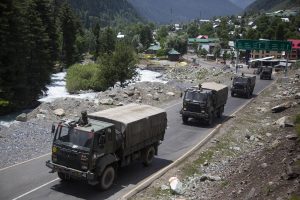Indian and Chinese front-line troops are disengaging in the western sector of their disputed border, but the process is intricate and requires constant verification, an Indian army spokesman said Thursday.
Col. Aman Anand’s suggestion that the disengagement will take time came after top commanders from the two sides held a fourth round of talks on Tuesday and a month after a deadly clash between their soldiers in the Galwan Valley.
India says 20 of its soldiers were killed in the June 15 clash and that there were casualties among the Chinese as well. China hasn’t confirmed any deaths on its side.
Chinese foreign ministry spokesperson Hua Chunying said on Wednesday that the two sides have made progress in disengaging the front-line troops and easing border tensions.
Hua called for concrete actions by India to implement the consensus reached by the two countries and jointly safeguard peace and tranquility along the border.
The Indian army spokesman said the senior commanders on Tuesday “reviewed the progress on implementation of the first phase of disengagement and discussed further steps to ensure complete disengagement.”
“This process is intricate and requires constant verification. They are taking it forward through regular meetings at the diplomatic and military level,’’ he said.
Indian External Affairs Ministry spokesman Anurag Srivastava said in a statement Thursday that the disengagement process is aimed at addressing face-off situations and close deployment of troops along the disputed border, known as the Line of Actual Control (LAC). “Both sides have agreed at specific points to re-deploy toward their regular posts on their respective sides of the LAC,” he said.
The disputed border extends about 3,500 kilometers (2,175 miles) and stretches from Ladakh in the north to the Indian state of Sikkim in the northeast.
India and China fought a border war in 1962 that also spilled into Ladakh. The two countries have been trying to settle their border dispute since the early 1990s, without success.
By Ashok Sharma for The Associated Press.

































